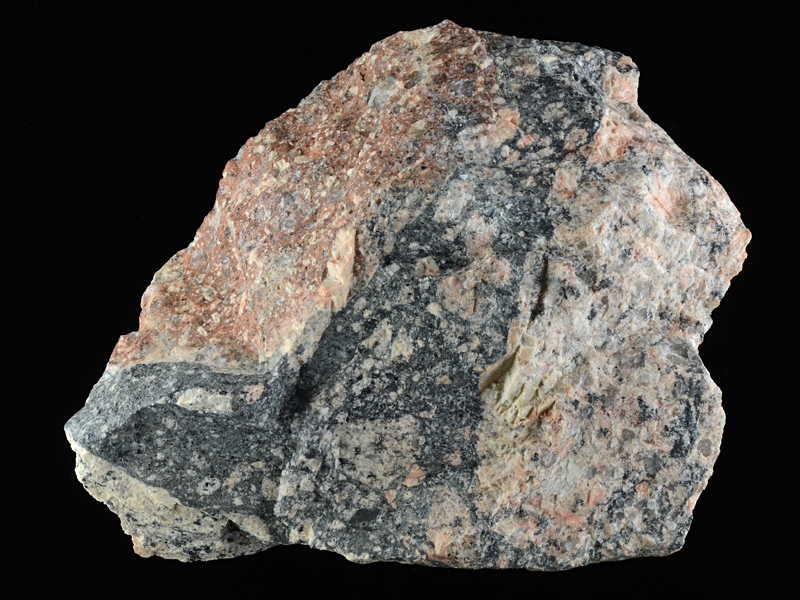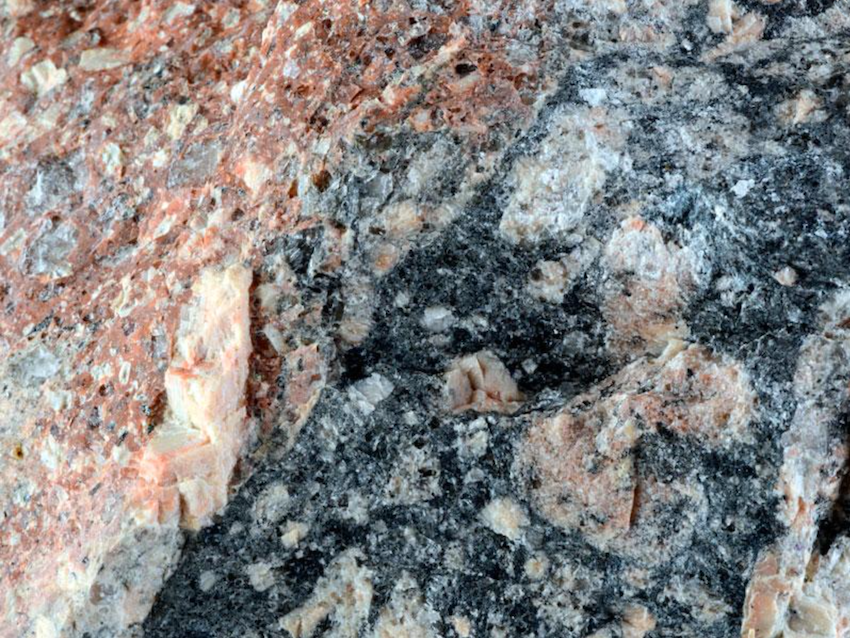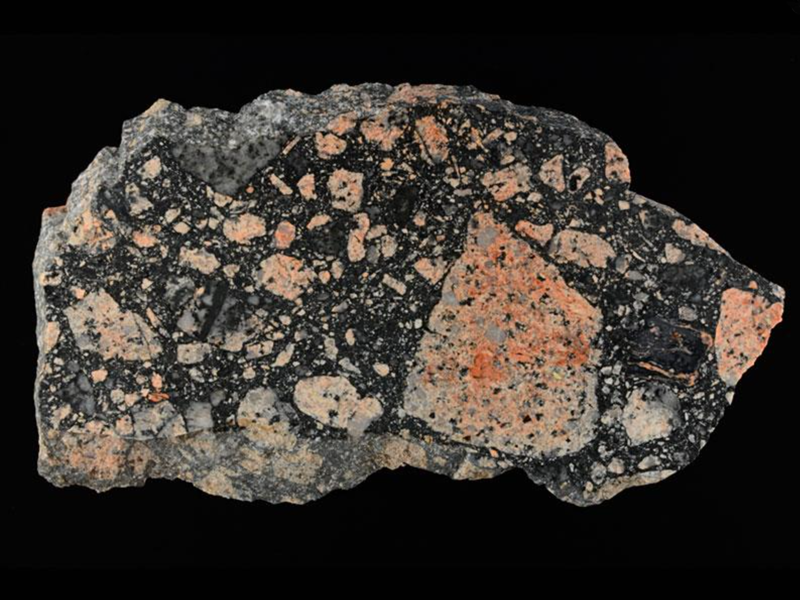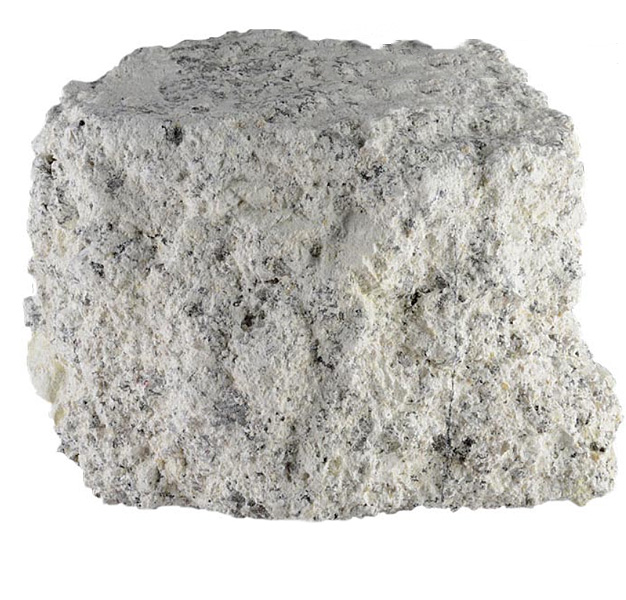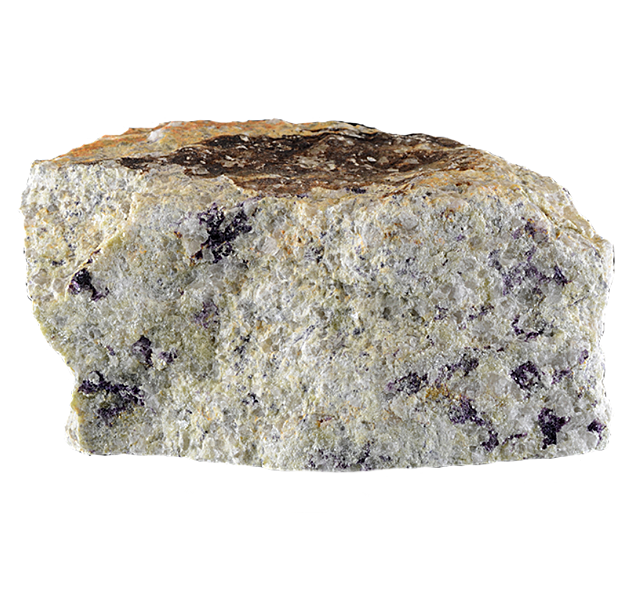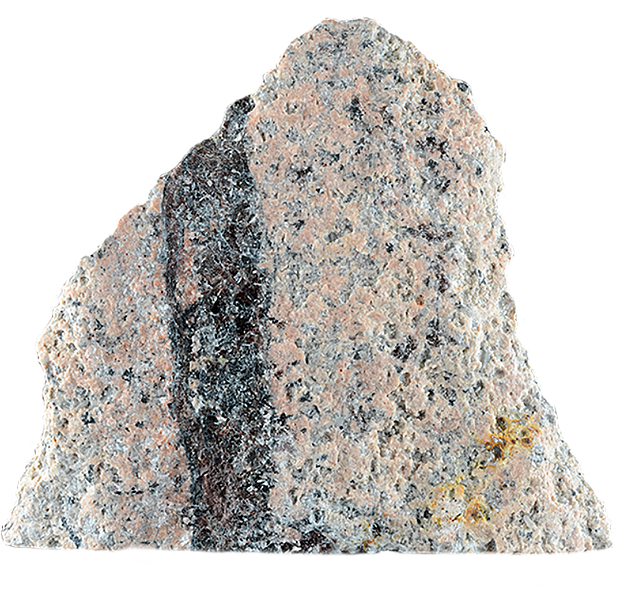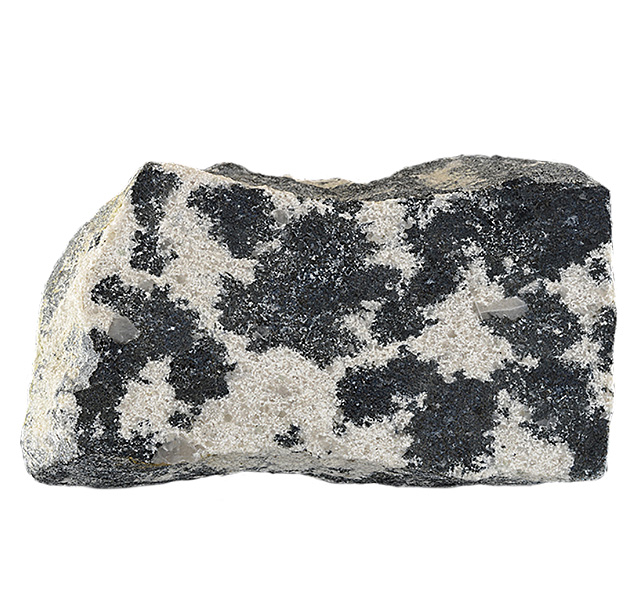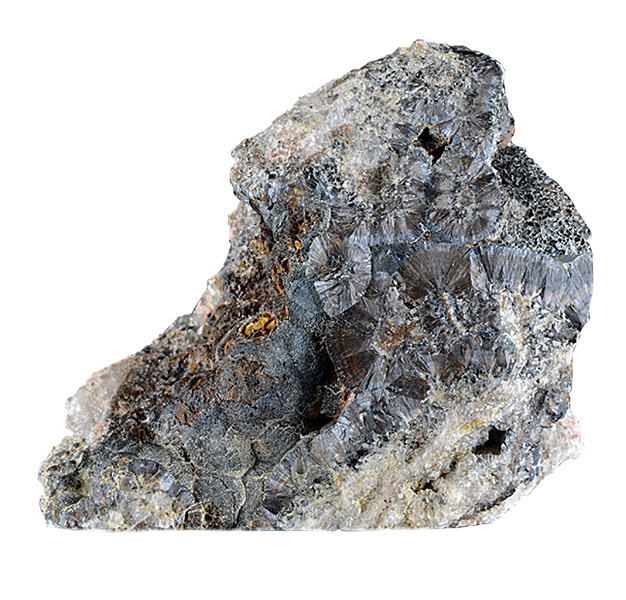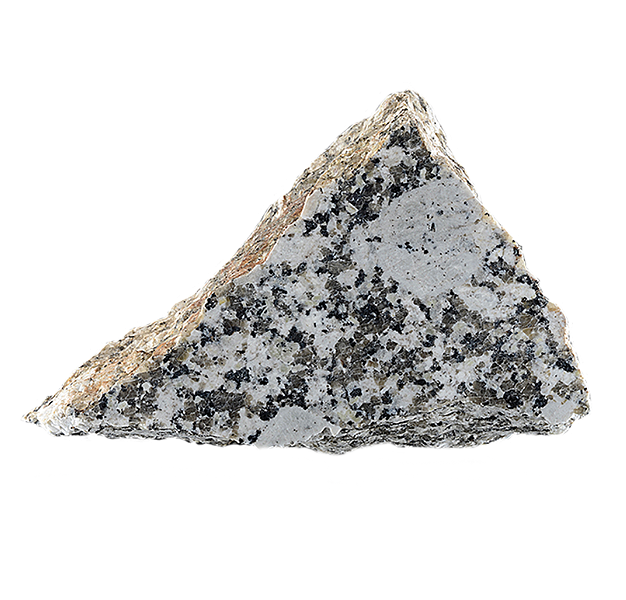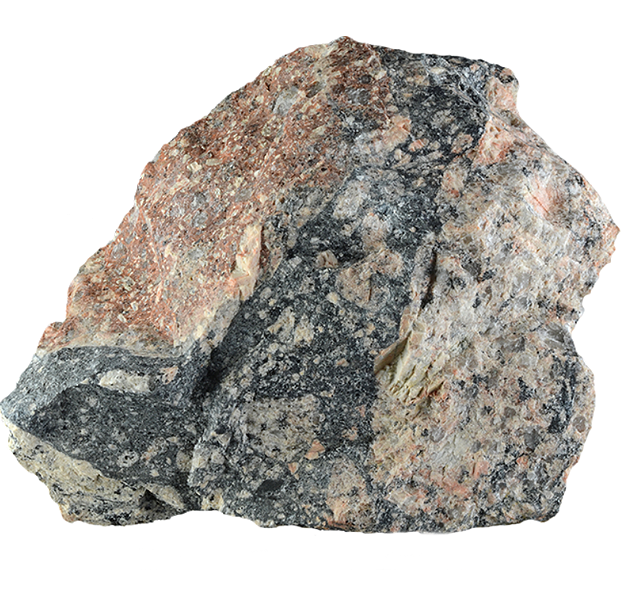
Fact sheet
Wheal Remfry is a working china clay pit in the St Austell granite complex. It hosts a spectacular hydrothermal explosion breccia. Hydrothermal breccia formed in a granitic magma chamber when there was a build-up and sudden release of pressure below an earlier crystallised granite roof. Boron-rich fluids accumulated as the magma crystallised, and when the pressure of these fluids exceeded the weight of the rock above (known as the lithostatic load) the fluid escaped catastrophically through vertical fractures. On reaching the surface the pressure suddenly dropped, leading to explosive decompression and break-up of the surrounding rock. The breccia contains granite and mineral fragments in a mainly quartz-tourmaline-rich matrix (the black material). The specimen also shows a large reddened orthoclase feldspar-rich microgranite fragment and a piece of the altered granite wall rock.
A case study of the St Austell granite complex in Cornwall, England, illustrating the range of rocks associated with a granite intrusion. The earliest part of the complex is a siderophyllite (biotite) granite containing muscovite and tourmaline typical of a SW England granite, with many primary magmatic features.
This early intrusion was followed by the intrusion of an evolved volatile-rich magma which was the driving force behind a series of intense hydrothermal processes as volatiles escaped from this magma and helped to establish an extensive alteration halo (aureole). Boron, fluorine and lithium (as well as water) played major roles in the formation of the second intrusion and in the associated hydrothermal processes. Igneous activity lasted around 18 million years from 282 Ma (siderophyllite granite) to 265 Ma (fluorite granite).
